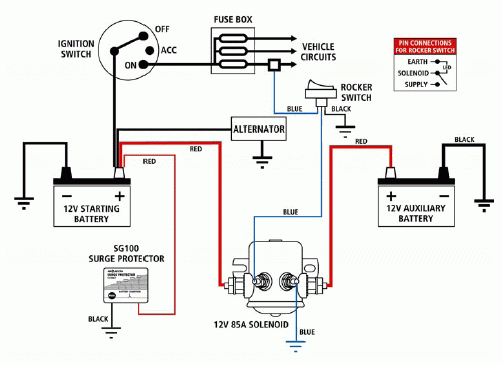There is no rule that the solenoid has to go in the engine compartment. Nor is there any rul that says power for th esolenoiid needs to come from Engine battery.
When You take power from the Engine battery, to fuse, to solenoid to fuse to house battery, It is a longer circuit than
Alternator to solenoid to Fuse to House battery..
This will shorten the house battery charging circuit
This will require one less fuse as the OEM charging circuit si already fused and will not be carrying any additional current, and does not need to be upgraded
ZGoing from Alternator to Solenoid to House battery is a shorter circuit The Vehicles voltage regulator will see that it requires more field current to get system voltage higher, andhopefully allows 14+ voltage to happen for longer, recharging house battery faster.
Bypassing the OEM charging circuit(Alternator to OEM FUSE to engine battery) will boost charging performance, as this cable is too small when depleted batteries are tacked onto the engine battery.
Just stack another ring terminal on the Alternator (+) output, and mount the solenoid under the body inline between alternator and house batteries( if in the back of Van/Vehicle in the Shortest circuit possible. You can run a ground cable from house battery to Alternator mounting bolt at the same time, and then not have to worry about the problematic frame grounds, And charging amps will likely also be higher too.
Eliminate the middle man, and one fuse. Take power from Alternator (+) stud for solenoid instead of engine battery. It simply works bettery for your battery, and will save money on Copper, and one fuse and fuse holder.
Taking power from the Engine battery requires the original OEM charging circuit carry more amps for longer than it was intended to do so when House batteries are tacked onto the end. Skip the engine battery, Take power from alternator (+) output stud, get more amps, spend less money easier and shorter cabling and one less fuse. Win Win win and Win, for the win.







